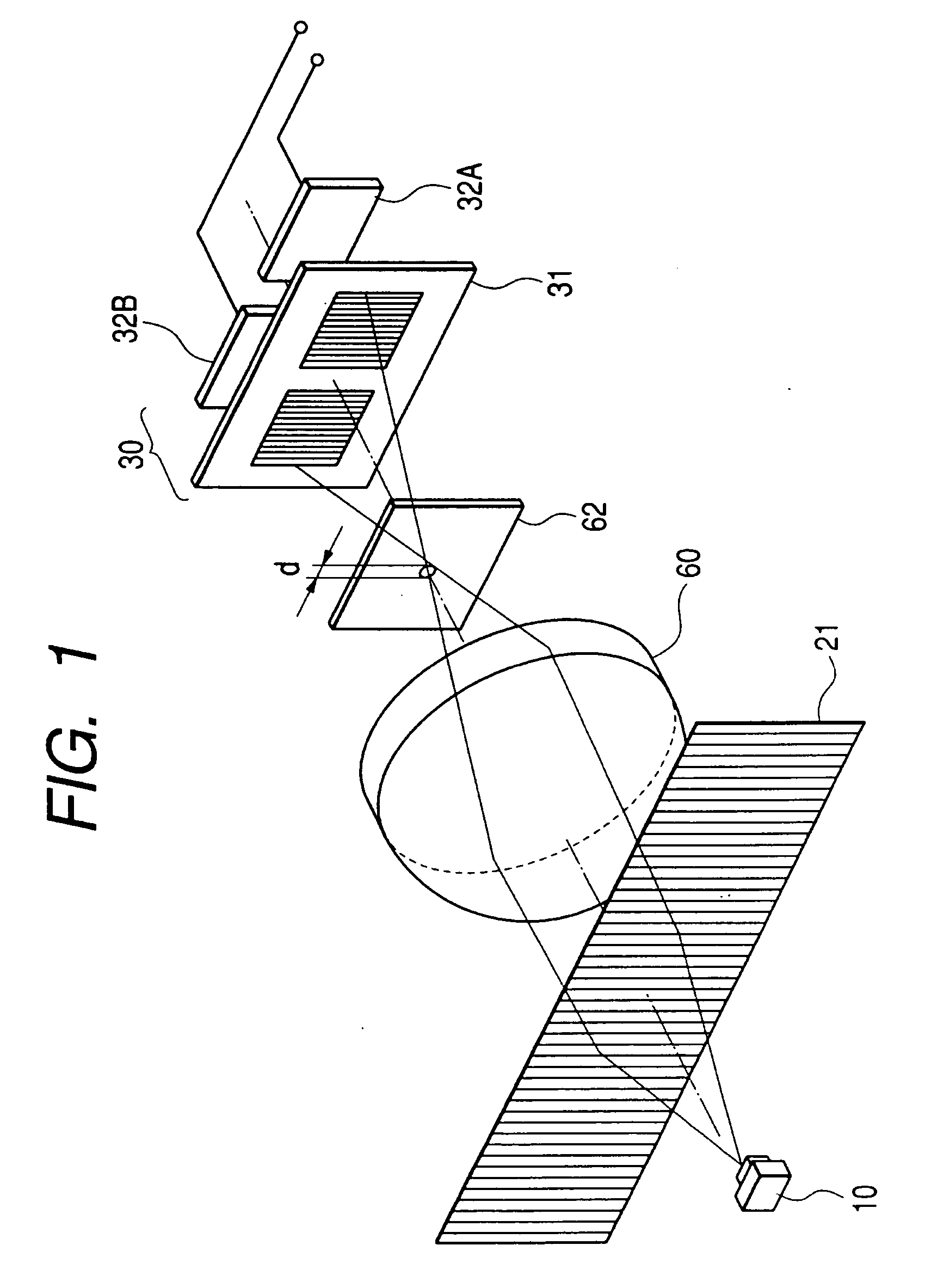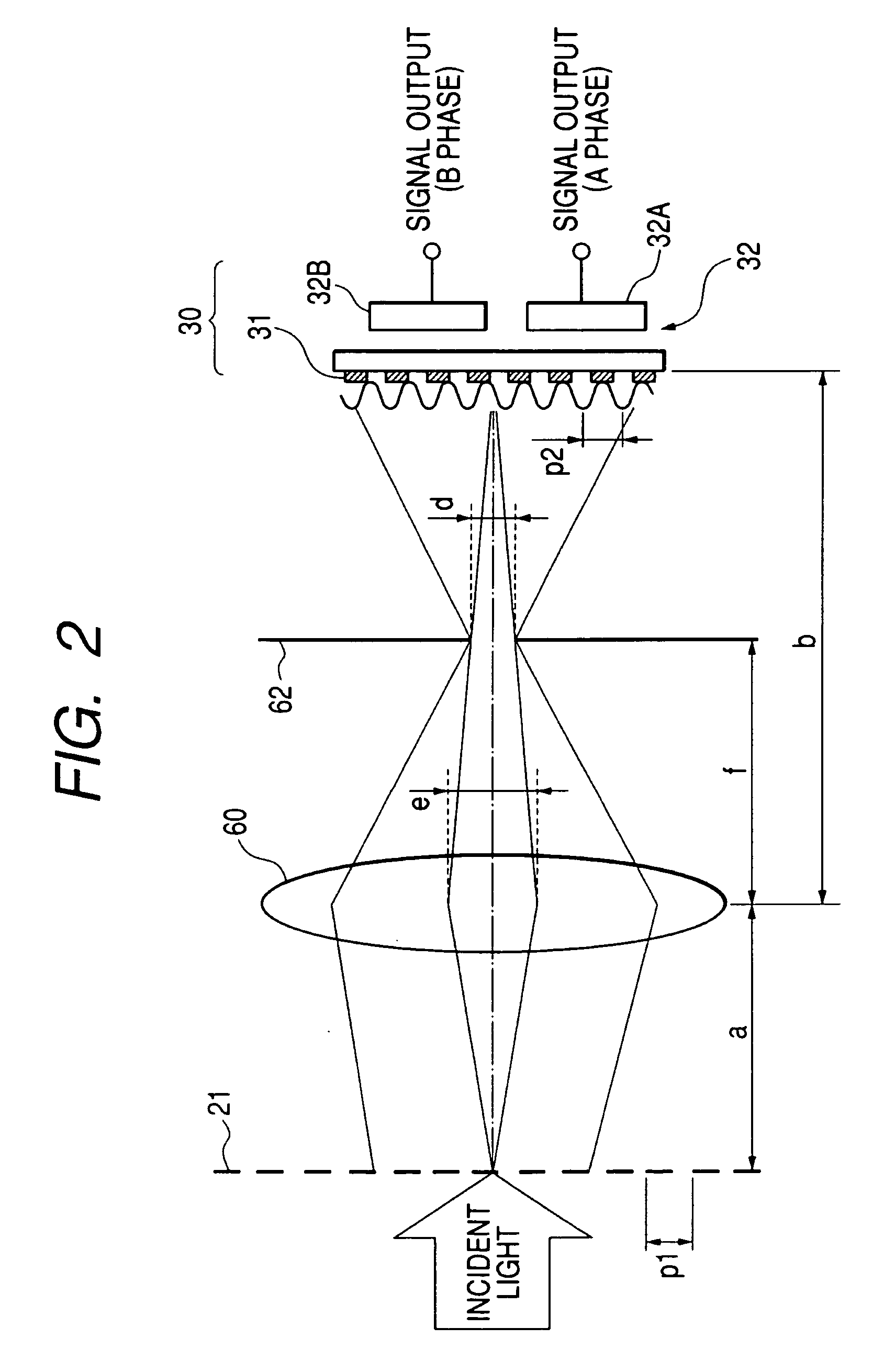Optical configuration for imaging-type optical encoders
a technology of optical encoder and optical configuration, applied in the field of optical or photoelectric encoder, can solve the problems of measurement error, change in reflected light angle, unstable signal characteristics, etc., and achieve the effects of reducing optical aberration, small diameter, and simple form
- Summary
- Abstract
- Description
- Claims
- Application Information
AI Technical Summary
Benefits of technology
Problems solved by technology
Method used
Image
Examples
first embodiment
[0082] According to the present invention, in a transmission-type photoelectric encoder similar to that in the related art shown in FIG. 15, as shown in FIG. 1 (perspective view) and FIG. 2 (optical path view), a light source 10 is provided. Further, a lens 60 and an aperture 62 are inserted between the first grating 21 of the main scale 20 and the light receiving portion 30, and a magnification of an image is set by adjusting distances a and b between the lens 60 and the first grating 21 and between the lens 60 and the index grating pattern 31, respectively.
[0083] According to the first embodiment, light emitted from the light source 10 passes through the first grating 21 of the main scale 20 and is incident on the lens 60. Only light emitted from the lens 60 along an optical axis passing through the aperture 62 provided at a focal point of the lens 60 reaches the index grating pattern 31 to form an image of the first grating 21.
[0084] Here, the magnification is calculated from a ...
second embodiment
[0094] Further, as a second embodiment, the light receiving portion 30 can be replaced by the light receiving element array similar to that in FIG. 16, as shown in FIG. 3.
[0095] Although there is only one optical axis according to the first and the second embodiments, as a third and a fourth embodiment, an explanation will be given of a structure for detection by an optical system comprising a plurality of optical axes using a lens array and an aperture array as follows.
[0096] According to the first and the second embodiments described above, the focal length of the lens is 3 mm and, therefore, a distance connecting the main scale, the lens, and the index grating pattern falls in a range of 12 through 13.5 mm. In order to achieve further small-sized formation, the focal length of the lens needs to be reduced.
[0097] However, when the focal length of the lens is reduced, in the case of a general lens that is readily obtainable, a diameter thereof is reduced. (FIG. 4 shows a list of ...
fourth embodiment
[0099]FIG. 6 shows a fourth embodiment in which the light receiving portion 30 is changed to the light receiving element array 33.
PUM
 Login to View More
Login to View More Abstract
Description
Claims
Application Information
 Login to View More
Login to View More - R&D
- Intellectual Property
- Life Sciences
- Materials
- Tech Scout
- Unparalleled Data Quality
- Higher Quality Content
- 60% Fewer Hallucinations
Browse by: Latest US Patents, China's latest patents, Technical Efficacy Thesaurus, Application Domain, Technology Topic, Popular Technical Reports.
© 2025 PatSnap. All rights reserved.Legal|Privacy policy|Modern Slavery Act Transparency Statement|Sitemap|About US| Contact US: help@patsnap.com



